In case you missed it, 2,569 internal documents related to internal services at Google leaked.
A search marketer named Erfan Amizi brought them to Rand Fishkin’s attention, and we analyzed them.
Pandemonium ensued.
As you might imagine, it’s been a crazy 48 hours for us all and I have completely failed at being on vacation.
Naturally, some portion of the SEO community has quickly fallen into the standard fear, uncertainty and doubt spiral.
Reconciling new information can be difficult and our cognitive biases can stand in the way.
It’s valuable to discuss this further and offer clarification so we can use what we’ve learned more productively.
After all, these documents are the clearest look at how Google actually considers features of pages that we have had to date.
In this article, I want to attempt to be more explicitly clear, answer common questions, critiques, and concerns and highlight additional actionable findings.
Finally, I want to give you a glimpse into how we will be using this information to do cutting-edge work for our clients. The hope is that we can collectively come up with the best ways to update our best practices based on what we’ve learned.
Reactions to the leak: My thoughts on common criticisms
Let’s start by addressing what people have been saying in response to our findings. I’m not a subtweeter, so this is to all of y’all and I say this with love. 😆
‘We already knew all that’
No, in large part, you did not.
Generally speaking, the SEO community has operated based on a series of best practices derived from research-minded people from the late 1990s and early 2000s.
For instance, we’ve held the page title in such high regard for so long because early search engines were not full-text and only indexed the page titles.
These practices have been reluctantly updated based on information from Google, SEO software companies, and insights from the community. There were numerous gaps that you filled with your own speculation and anecdotal evidence from your experiences.
If you’re more advanced, you capitalized on temporary edge cases and exploits, but you never knew exactly the depth of what Google considers when it computes its rankings.
You also did not know most of its named systems, so you would not have been able to interpret much of what you see in these documents. So, you searched these documents for the things that you do understand and you concluded that you know everything here.
That is the very definition of confirmation bias.
In reality, there are many features in these documents that none of us knew.
Just like the 2006 AOL search data leak and the Yandex leak, there will be value captured from these documents for years to come. Most importantly, you also just got actual confirmation that Google uses features that you might have suspected. There is value in that if only to act as proof when you are trying to get something implemented with your clients.
Finally, we now have a better sense of internal terminology. One way Google spokespeople evade explanation is through language ambiguity. We are now better armed to ask the right questions and stop living on the abstraction layer.
‘We should just focus on customers and not the leak’
Sure. As an early and continued proponent of market segmentation in SEO, I obviously think we should be focusing on our customers.
Yet we can’t deny that we live in a reality where most of the web has conformed to Google to drive traffic.
We operate in a channel that is considered a black box. Our customers ask us questions that we often respond to with “it depends.”
I’m of the mindset that there is value in having an atomic understanding of what we’re working with so we can explain what it depends on. That helps with building trust and getting buy-in to execute on the work that we do.
Mastering our channel is in service of our focus on our customers.
‘The leak isn’t real’
Skepticism in SEO is healthy. Ultimately, you can decide to believe whatever you want, but here’s the reality of the situation:
- Erfan had his Xoogler source authenticate the documentation.
- Rand worked through his own authentication process.
- I also authenticated the documentation separately through my own network and backchannel resources.
I can say with absolute confidence that the leak is real and has been definitively verified in several ways including through insights from people with deeper access to Google’s systems.
In addition to my own sources, Xoogler Fili Wiese offered his insight on X. Note that I’ve included his call out even though he vaguely sprinkled some doubt on my interpretations without offering any other information. But that’s a Xoogler for you, amiright? 😆
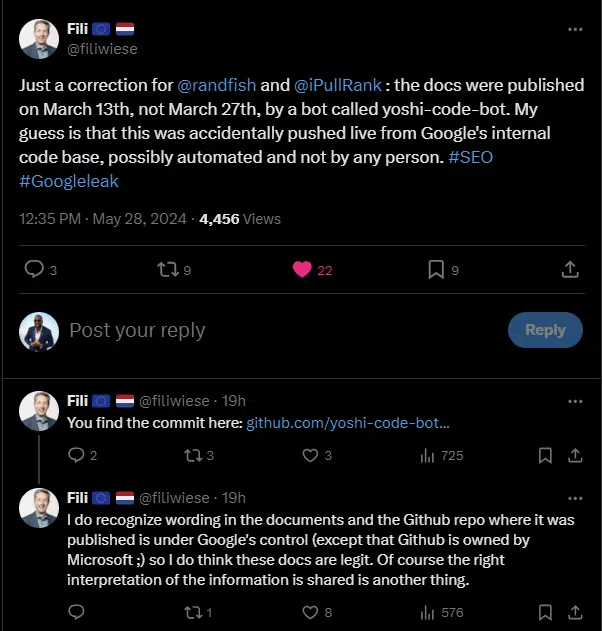

Finally, the documentation references specific internal ranking systems that only Googlers know about. I touched on some of those systems and cross-referenced their functions with detail from a Google engineer’s resume.
Oh, and Google just verified it in a statement as I was putting my final edits on this.
“This is a Nothingburger”
No doubt.
I’ll see you on page 2 of the SERPs while I’m having mine medium with cheese, mayo, ketchup and mustard.
“It doesn’t say CTR so it’s not being used”
So, let me get this straight, you think a marvel of modern technology that computes an array of data points across thousands of computers to generate and display results from tens of billions of pages in a quarter of a second that stores both clicks and impressions as features is incapable of performing basic division on the fly?
… OK.
“Be careful with drawing conclusions from this information”
I agree with this. We all have the potential to be wrong in our interpretation here due to the caveats that I highlighted.
To that end, we should take measured approaches in developing and testing hypotheses based on this data.
The conclusions I’ve drawn are based on my research into Google and precedents in Information Retrieval, but like I said it is entirely possible that my conclusions are not absolutely correct.
“The leak is to stop us from talking about AI Overviews”
No.
The misconfigured documentation deployment happened in March. There’s some evidence that this has been happening in other languages (sans comments) for two years.
The documents were discovered in May. Had someone discovered it sooner, it would have been shared sooner.
The timing of AI Overviews has nothing to do with it. Cut it out.
“We don’t know how old it is”
This is immaterial. Based on dates in the files, we know it’s at least newer than August 2023.
We know that commits to the repository happen regularly, presumably as a function of code being updated. We know that much of the docs have not changed in subsequent deployments.
We also know that when this code was deployed, it featured exactly the 2,596 files we have been reviewing and many of those files were not previously in the repository. Unless whoever/whatever did the git push did so with out of date code, this was the latest version at the time.
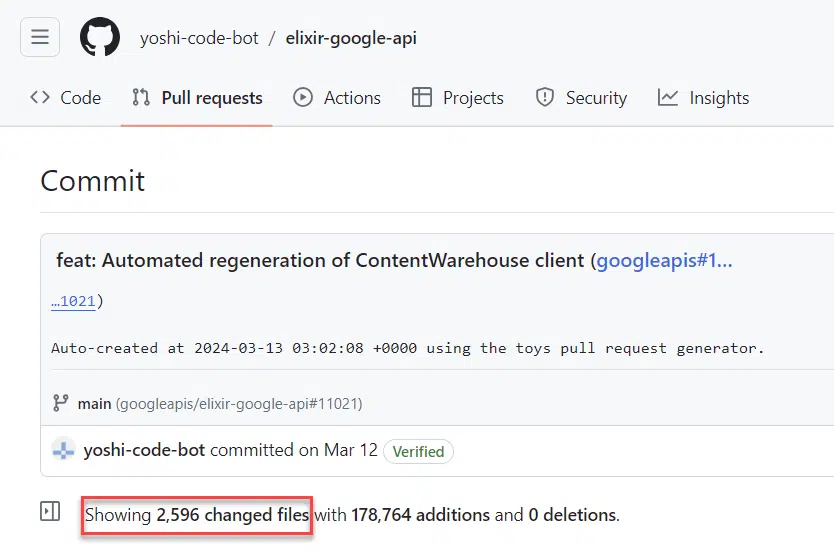

The documentation has other markers of recency, like references to LLMs and generative features, which suggests that it is at least from the past year.
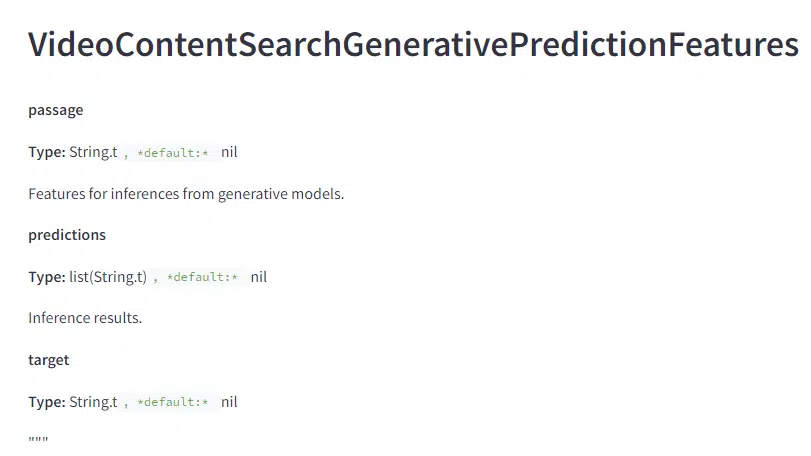

Either way it has more detail than we have ever gotten before and more than fresh enough for our consideration.
“This all isn’t related to search”
That is correct. I indicated as much in my previous article.
What I did not do was segment the modules into their respective service. I took the time to do that now.
Here’s a quick and dirty classification of the features broadly classified by service based on ModuleName:
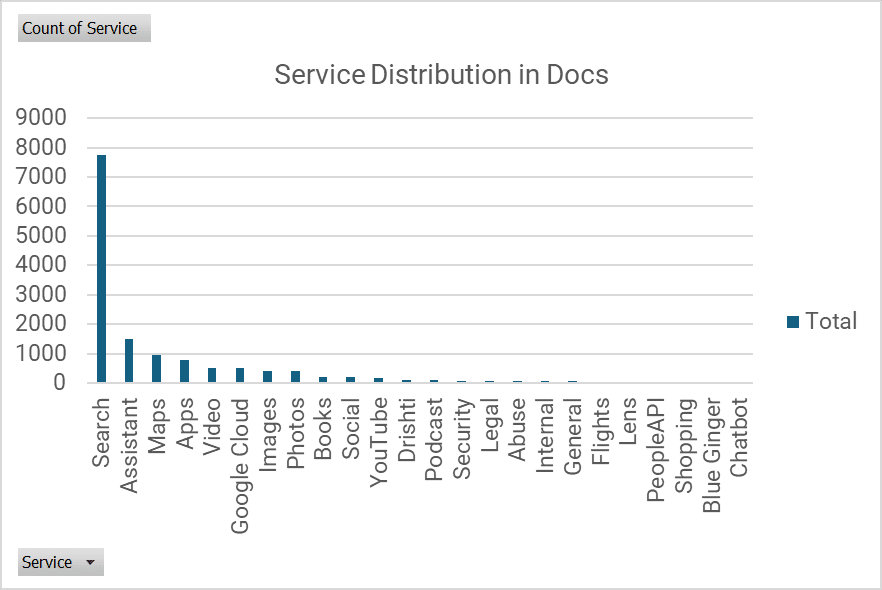

Of the 14,000 features, roughly 8,000 are related to Search.
“It’s just a list of variables”
Sure.
It’s a list of variables with descriptions that gives you a sense of the level of granularity Google uses to understand and process the web.
If you care about ranking factors this documentation is Christmas, Hanukkah, Kwanzaa and Festivus.
“It’s a conspiracy! You buried [thing I’m interested in]”
Why would I bury something and then encourage people to go look at the documents themselves and write about their own findings?
Make it make sense.
“This won’t change anything about how I do SEO”
This is a choice and, perhaps, a function of me purposely not being prescriptive with how I presented the findings.
What we’ve learned should at least enhance your approach to SEO strategically in a few meaningful ways and can definitely change it tactically. I’ll discuss that below.
FAQs about the leaked docs
I’ve been asked a lot of questions in the past 48 hours so I think it’s valuable to memorialize the answers here.
What were the most interesting things you found?
It’s all very interesting to me, but here’s a finding that I did not include in the original article:
Google can specify a limit of results per content type.
In other words, they can specify only X number of blog posts or Y number of news articles can appear for a given SERP.
Having a sense of these diversity limits could help us decide which content formats to create when we are selecting keywords to target.
For instance, if we know that the limit is three for blog posts and we don’t think we can outrank any of them, then maybe a video is a more viable format for that keyword.
What should we take away from this leak?
Search has many layers of complexity. Even though we have a broader view into things we don’t know which elements of the ranking systems trigger or why.
We now have more clarity on the signals and their nuances.
What are the implications for local search?
Andrew Shotland is the authority on that. He and his group at LocalSEOGuide have begun to dig into things from that perspective.
What are the implications for YouTube Search?
I have not dug into that, but there are 23 modules with YouTube prefixes.
Someone should definitely do and interpretation of it.
How does this impact the (_______) space?
The simple answer is, it’s hard to know.
An idea that I want to continue to drill home is that Google’s scoring functions behave differently depending on your query and context. Given the evidence we see in how the SERPs function, there are different ranking systems that activate for different verticals.
To illustrate this point, the Framework for evaluating web search scoring functions patent shows that Google has the capability to run multiple scoring functions simultaneously and decide which result set to use once the data is returned.


While we have many of the features that Google is storing, we do not have enough information about the downstream processes to know exactly what will happen for any given space.
That said, there are some indicators of how Google accounts for some spaces like Travel.
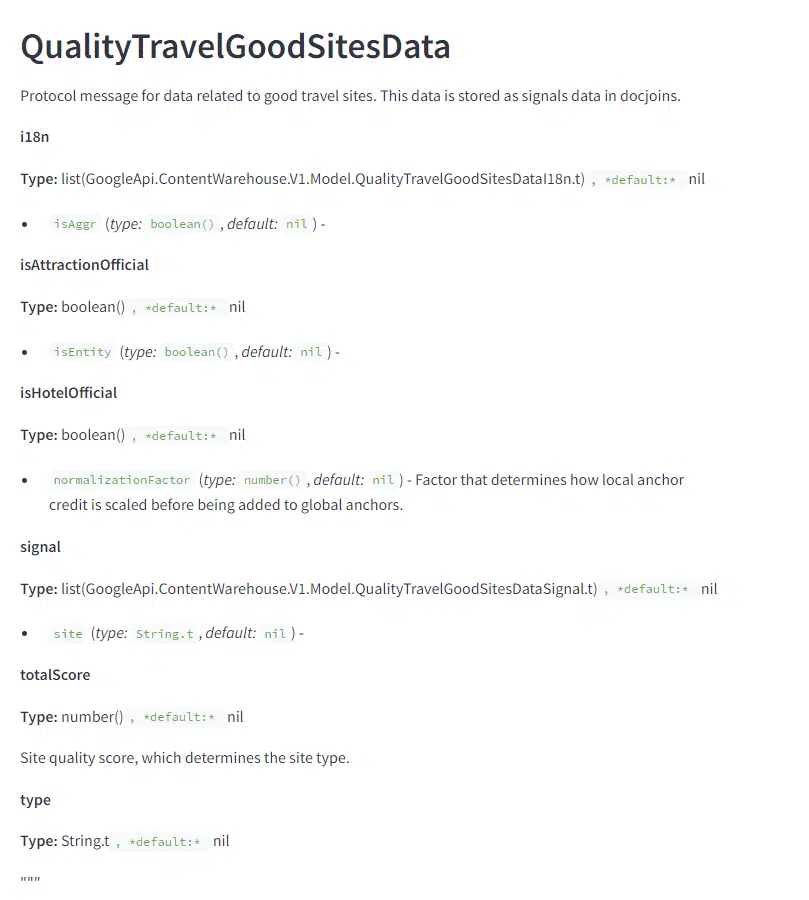

The QualityTravelGoodSitesData module has features that identify and score travel sites, presumably to give them a Boost over non-official sites.
Do you really think Google is purposely torching small sites?
I don’t know.
I also don’t know exactly how smallPersonalSite is defined or used, but I do know that there is a lot of evidence of small sites losing most of their traffic and Google is sending less traffic to the long tail of the web.
That’s impacting the livelihood of small businesses. And their outcry seems to have fallen on deaf ears.
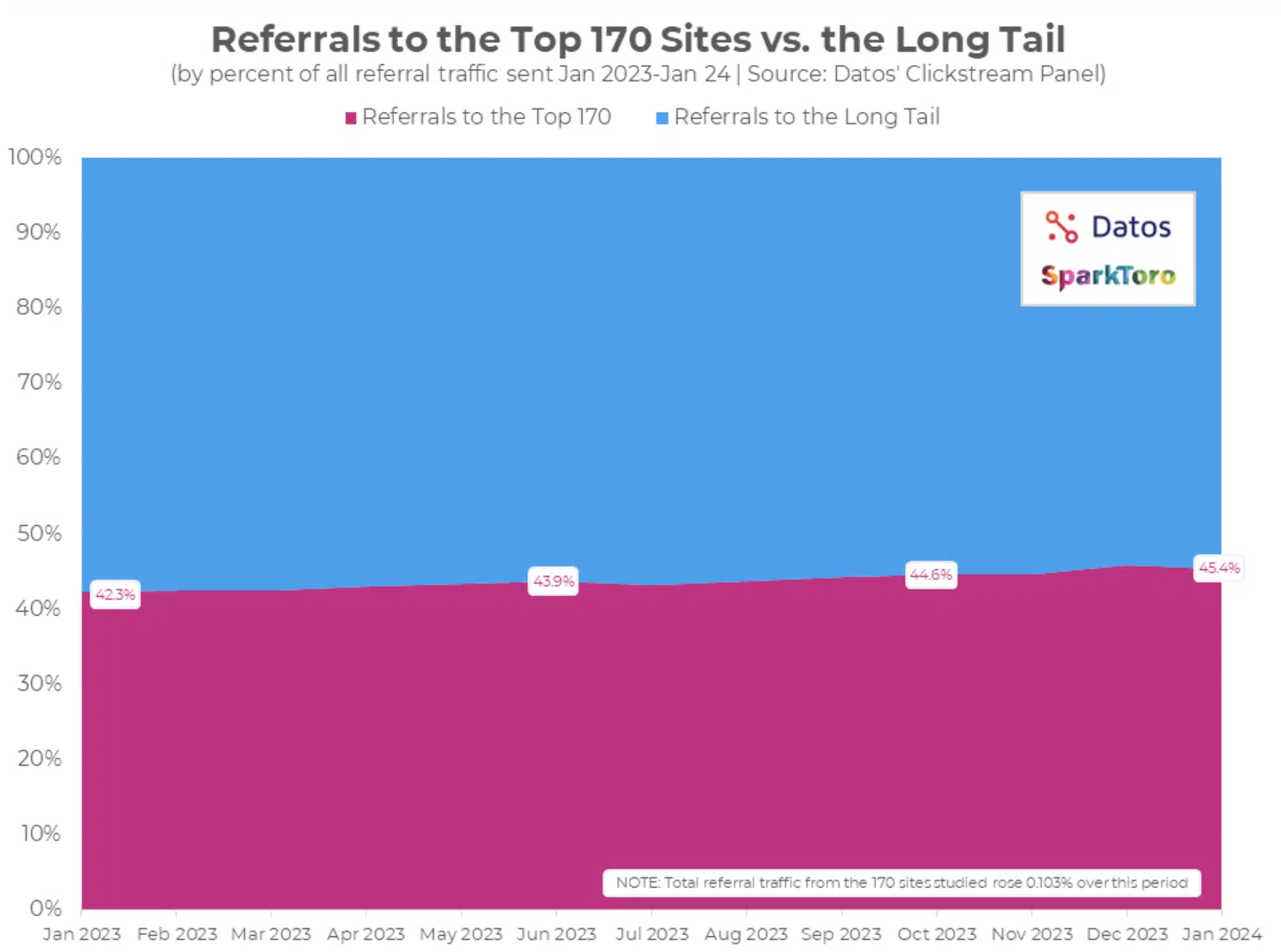

Signals like links and clicks inherently support big brands. Those sites naturally attract more links and users are more compelled to click on brands they recognize.
Big brands can also afford agencies like mine and more sophisticated tooling for content engineering so they demonstrate better relevance signals.
It’s a self-fulfilling prophecy and it becomes increasingly difficult for small sites to compete in organic search.
If the sites in question would be considered “small personal sites” then Google should give them a fighting chance with a Boost that offsets the unfair advantage big brands have.
Do you think Googlers are bad people?
I don’t.
I think they generally are well-meaning folks that do the hard job of supporting many people based on a product that they have little influence over and is difficult to explain.
They also work in a public multinational organization with many constraints. The information disparity creates a power dynamic between them and the SEO community.
Googlers could, however, dramatically improve their reputations and credibility among marketers and journalists by saying “no comment” more often rather than providing misleading, patronizing or belittling responses like the one they made about this leak.
Although it’s worth noting that the PR respondent Davis Thompson has been doing comms for Search for just the last two months and I’m sure he is exhausted.
Is there anything related to AI Overviews?
I was not able to find anything directly related to SGE/AIO, but I have already presented a lot of clarity on how that works.
I did find a few policy features for LLMs. This suggests that Google determines what content can or cannot be used from the Knowledge Graph with LLMs.


Is there anything related to generative AI?
There is something related to video content. Based on the write-ups associated with the attributes, I suspect that they use LLMs to predict the topics of videos.
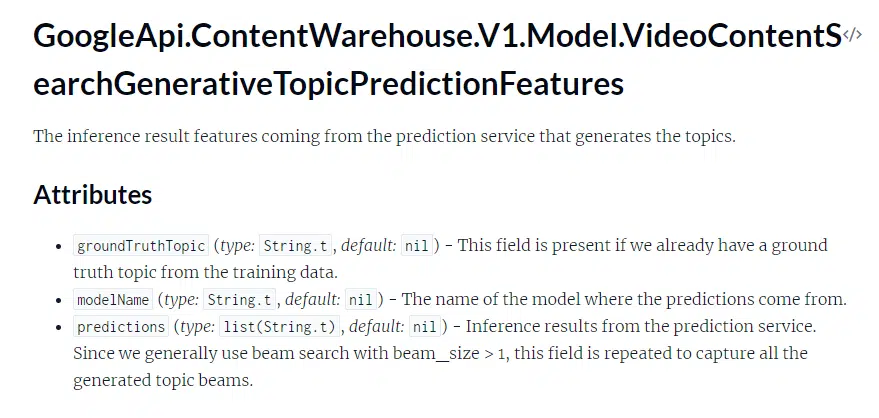

New discoveries from the leak
Some conversations I’ve had and observed over the past two days has helped me recontextualize my findings – and also dig for more things in the documentation.
Baby Panda is not HCU
Someone with knowledge of Google’s internal systems was able to answer that the Baby Panda references an older system and is not the Helpful Content Update.
I, however, stand by my hypothesis that HCU exhibits similar properties to Panda and it likely requires similar features to improve for recovery.
A worthwhile experiment would be trying to recover traffic to a site hit by HCU by systematically improving click signals and links to see if it works. If someone with a site that’s been struck wants to volunteer as tribute, I have a hypothesis that I’d like to test on how you can recover.
The leaks technically go back two years
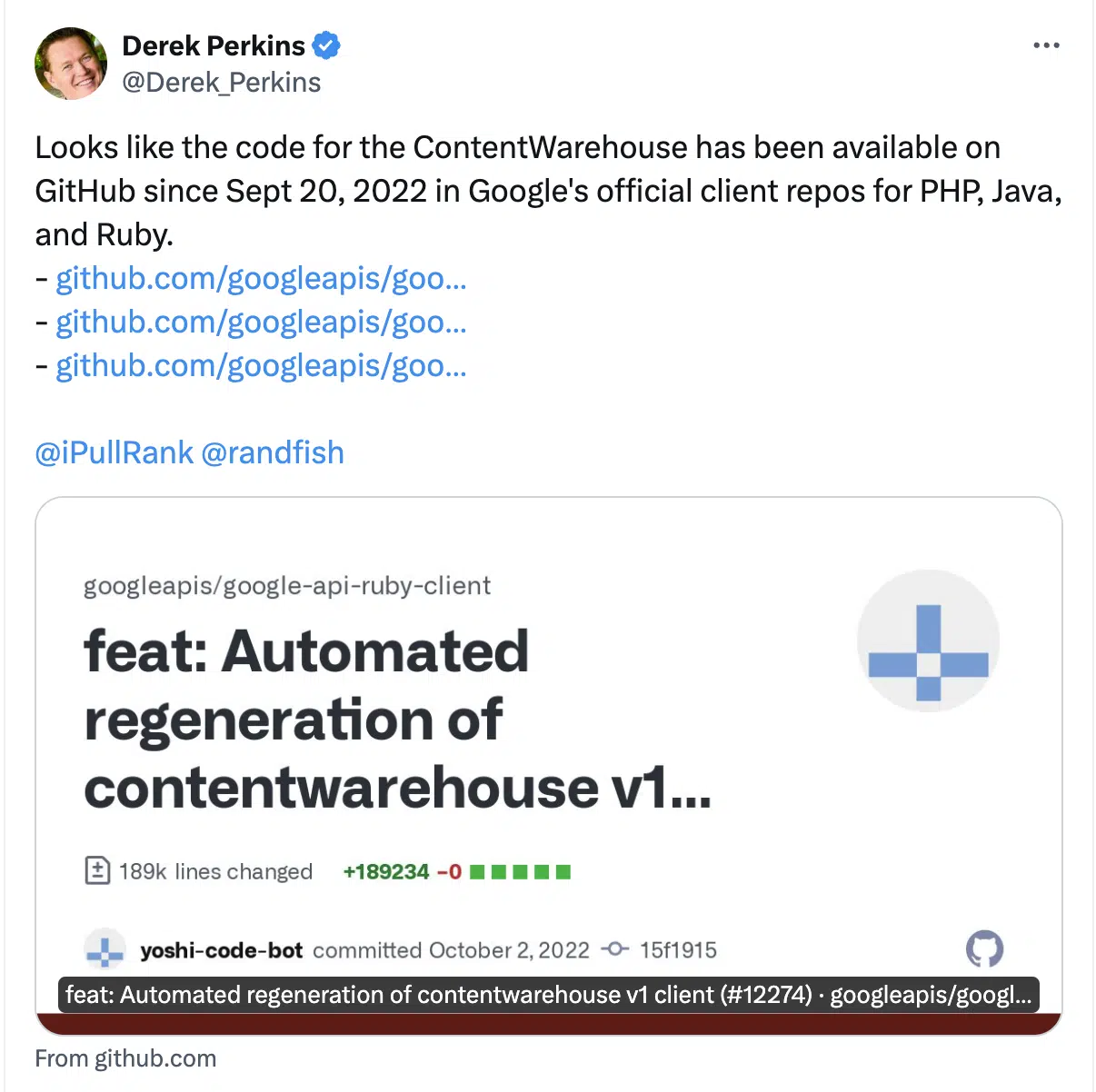

Derek Perkins and @SemanticEntity brought to my attention on Twitter that the leaks have been available across languages in Google’s client libraries for Java, Ruby, and PHP.
The difference with those is that there is very limited documentation in the code.
There is a content effort score maybe for generative AI content
Google is attempting to determine the amount of effort employed when creating content. Based on the definition, we don’t know if all content is scored by this way by an LLM or if it is just content that they suspect is built using generative AI.


Nevertheless, this is a measure you can improve through content engineering.
The significance of page updates is measured
The significance of a page update impacts how often a page is crawled and potentially indexed. Previously, you could simply change the dates on your page and it signaled freshness to Google, but this feature suggests that Google expects more significant updates to the page.


Pages are protected based on earlier links in Penguin
According to the description of this feature, Penguin had pages that were considered protected based on the history of their link profile.


This, combined with the link velocity signals, could explain why Google is adamant that negative SEO attacks with links are ineffective.
Toxic backlinks are indeed a thing
We’ve heard that “toxic backlinks” are a concept that simply used to sell SEO software. Yet there is a badbacklinksPenalized feature associated with documents.
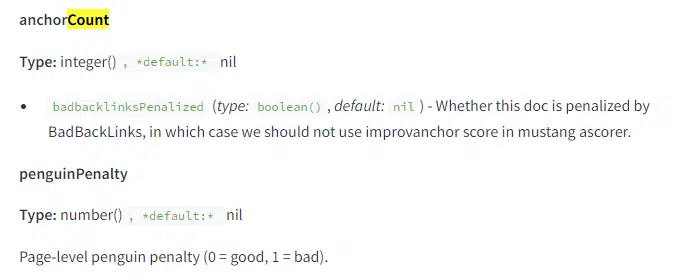

There’s a blog copycat score
In the blog BlogPerDocData module there is a copycat score without a definition, but is tied to the docQualityScore.
My assumption is that it is a measure of duplication specifically for blog posts.


Mentions matter a lot
Although I have not come across anything to suggest mentions are treated as links, there are lot of mentions of mentions as they relate to entities.
This simply reinforces that leaning into entity-driven strategies with your content is a worthwhile addition to your strategy.
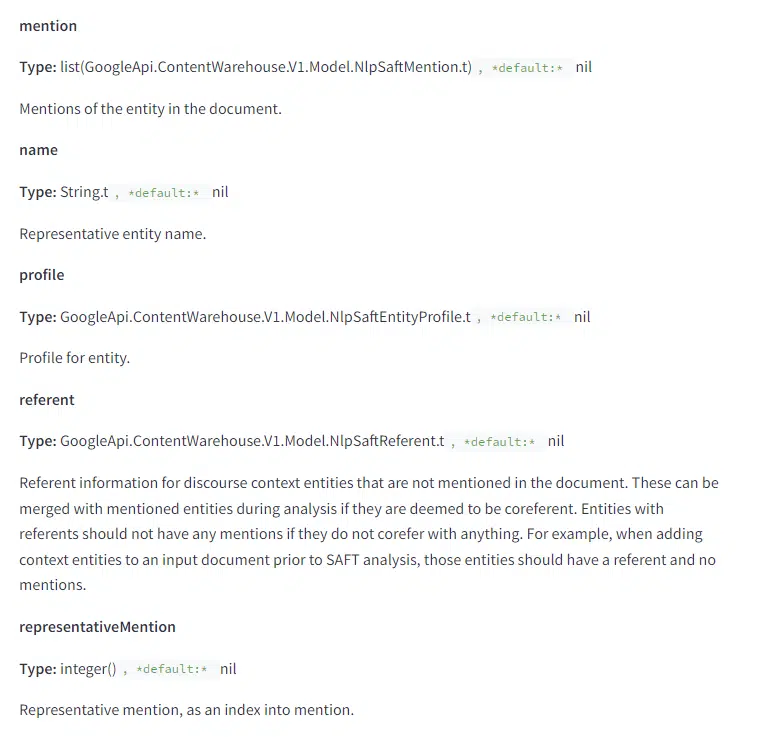

Googlebot is more capable than we thought
Googlebot’s fetching mechanism is capable of more than just GET requests.
The documentation indicates that it can do POST, PUT, or PATCH requests as well.
The team previously talked about POST requests, but it the other two HTTP verbs have not been previously revealed. If you see some anomalous requests in your logs, this may be why.


Specific measures of ‘effort’ for UGC
We’ve long believed that leveraging UGC is a scalable way to get more content onto pages and improve their relevance and freshness.
This ugcDiscussionEffortScore suggests that Google is measuring the quality of that content separately from the core content.
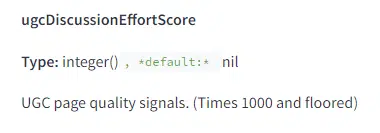

When we work with UGC-driven marketplaces and discussion sites, we do a lot of content strategy work related to prompting users to say certain things. That, combined with heavy moderation of the content, should be fundamental to improving the visibility and performance of those sites.
Google detects how commercial a page is
We know that intent is a heavy component of Search, but we only have measures of this on the keyword side of the equation.
Google scores documents this way as well and this can be used to stop a page from being considered for a query with informational intent.


We’ve worked with clients who actively experimented with consolidating informational and transactional page content, with the goal of improving visibility for both types of terms. This worked to varying degrees, but it’s interesting to see the score effectively considered a binary based on this description.
Cool things I’ve seen people do with the leaked docs
I’m pretty excited to see how the documentation is reverberating across the space.
Natzir’s Google’s Ranking Features Modules Relations: Natzir builds a network graph visualization tool in Streamlit that shows the relationships between modules.
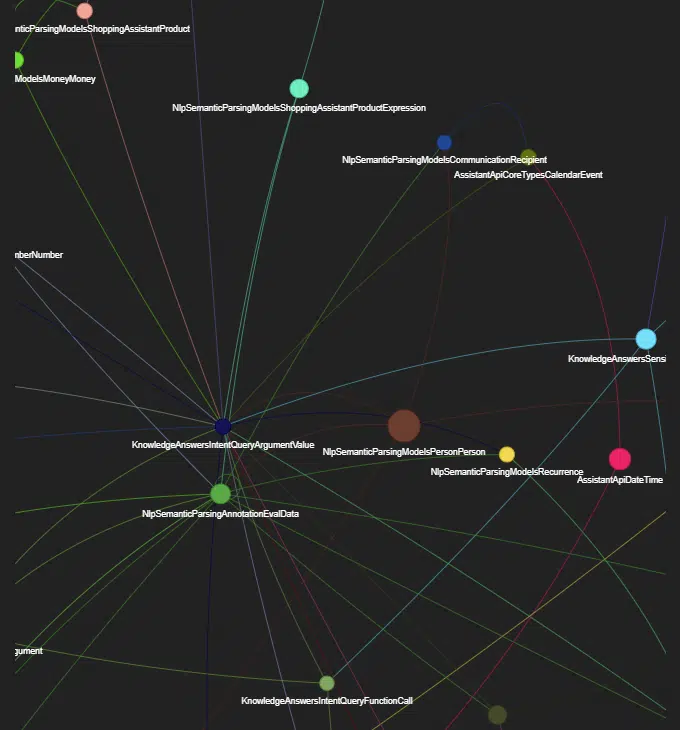

WordLift’s Google Leak Reporting Tool: Andrea Volpini built a Streamlit app that lets you ask custom questions about the documents to get a report.
Direction on how to move forward in SEO
The power is in the crowd and the SEO community is a global team.
I don’t expect us to all agree on everything I’ve reviewed and discovered, but we are at our best when we build on our collective expertise.
Here are some things that I think are worth doing.
How to read the documents
If you haven’t had the chance to dig into the documentation on HexDocs or you’ve tried and don’t know here to start, worry not, I’ve got you covered.
- Start from the root: This features listings of all the modules with some descriptions. In some cases attributes from the module are being displayed.
- Make sure you’re looking at the right version: v0.5.0 Is the patched version The versions prior to that have docs we’ve been discussing.
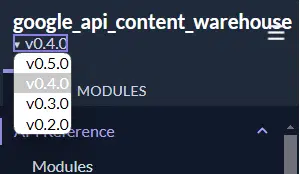

- Scroll down until you find a module that sounds interesting to you: Look through the names and click things that sound interesting. I focused on elements related to search, but you be interested in Assistant, YouTube, etc.
- Read through the attributes: As you read through the descriptions of features take note of other features the are referenced in them.
- Search: Use that perform searches for those terms in the docs
- Repeat until you’re done: Go back to step 1. As you learn more you’ll find other things you want to search and you’ll realize certain strings might mean there are other modules that interest you.
- Share your findings: If you find something cool, share it on social or write about it. I’m happy to help you amplify.
One thing that annoys me about HexDocs is how the left sidebar covers most of the names of the modules. This makes it difficult to know what you’re navigating to.
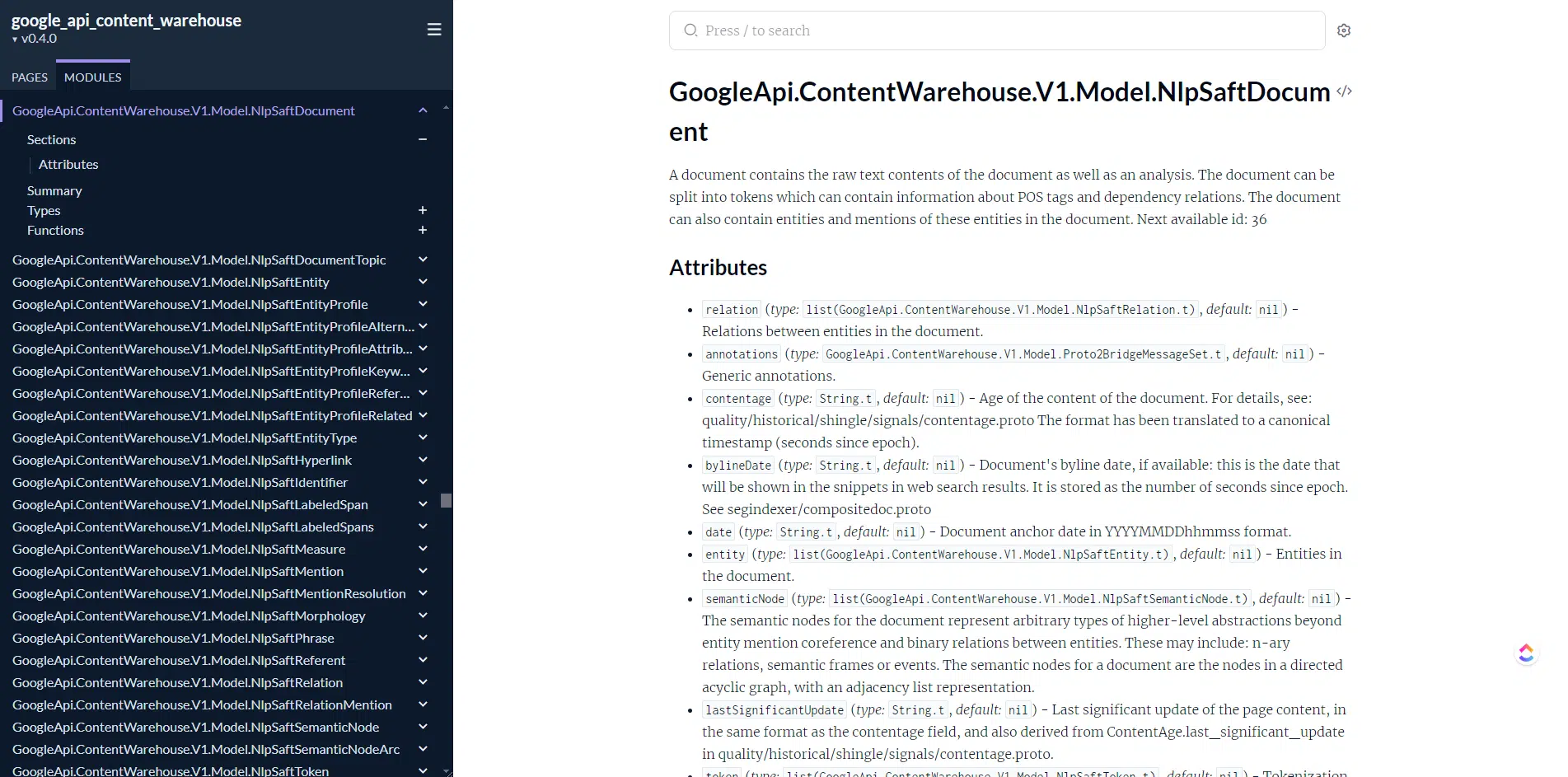

If you don’t want to mess with the CSS, I’ve made a simple Chrome extension that you can install to make the sidebar bigger.
How your approach to SEO should change strategically
Here are some strategic things that you should more seriously consider as part of your SEO efforts.
If you are already doing all these things, you were right, you do know everything, and I salute you. 🫡
SEO and UX need to work more closely together
With NavBoost, Google is valuing clicks one of the most important features, but we need to understand what session success means. A search that yields a click on a result where the user does not perform another search can be a success even if they did not spend a lot of time on the site. That can indicate that the user found what they were looking for. Naturally, a search that yields a click and a user spends 5 minutes on a page before coming back to Google is also a success. We need to create more successful sessions.
SEO is about driving people to the page, UX is about getting them to do what you want on the page. We need to pay closer attention to how components are structured and surfaced to get people to the content that they are explicitly looking for and give them a reason to stay on the site. It’s not enough to hide what I’m looking for after a story about your grandma’s history of making apple pies with hatchets or whatever these recipe sites are doing. Rather it should be more about here’s the exact information clearly displayed and enticing the user to remain on the page with something additionally compelling.
Pay more attention to click metrics
We treat Search Analytics data as outcomes, but Google’s ranking systems treat them as diagnostic features.
If you rank highly and you have a ton of impressions and no clicks (aside from when SiteLinks throws the numbers off) you likely have a problem.
What we are definitively learning is that there is a threshold of expectation for performance based on position. When you fall below that threshold you can lose that position.
Content needs to be more focused
We’ve learned definitively that Google uses vector embeddings to determine how far off given a page is from the rest of what you talk about.
This indicates that it will be challenging to go far into upper funnel content successfully without a structured expansion or without authors who have demonstrated expertise in that subject area.
Encourage your authors to cultivate expertise in what they publish across the web and treat their bylines like the gold standard that it is.
SEO should always be experiment-driven
Due to the variability of the ranking systems, you cannot take best practices at face value for every space. You need to test, learn and build experimentation in every SEO program.
Large sites leveraging products like SEO split testing tool Searchpilot are already on the right track, but even small sites should test how they structure and position their content and metadata to encourage stronger click metrics.
In other words, we need to actively test the SERP, not just the site.
Pay attention to what happens after they leave your site
We now have verification that Google is using data from Chrome as part of the search experience. There is value in reviewing the clickstream data from SimilarWeb and Semrush.
Trends provide to see where people are going next and how you can give them that information without them leaving you.
Build keyword and content strategy around SERP format diversity
Google potentially limits the number of pages of certain content types ranking in the SERP, so checking the SERPs should become part of your keyword research.
Don’t align formats with keywords if there’s no reasonable possibility of ranking.
How your approach to SEO should change tactically
Tactically, here are some things you can consider doing differently. Shout out to Rand because a couple of these ideas are his.
Page titles can be as long as you want
We now have further evidence that the 60-70 character limit is a myth.
In my own experience we have experimented with appending more keyword-driven elements to the title and it has yielded more clicks because Google has more to choose from when it rewrites the title.
Use fewer authors on more content
Rather than using an array of freelance authors, you should work with fewer that are more focused on subject matter expertise and also write for other publications.
Focus on link relevance from sites with traffic
We’ve learned that link value is higher from pages that prioritized higher in the index. Pages that get more clicks are pages that are likely to appear in Google’s flash memory.
We’ve also learned that Google highly values relevance. We need to stop going after link volume and solely focus on relevance.
Default to originality instead of long form
We now know originality is measured in multiple ways and can yield a boost in performance.
Some queries simply don’t require a 5,000-word blog post (I know, I know). Focus on originality and layer more information in your updates as competitors begin to copy you.
Make sure all dates associated with a page are consistent
It’s common for dates in schema to be out of sync with dates on the page and dates in the XML sitemap. All of these need to be synced to ensure Google has the best understanding of how hold the content is.
As you refresh your decaying content, make sure every date is aligned so Google gets a consistent signal.
Use old domains with extreme care
If you’re looking to use an old domain, it’s not enough to buy it and slap your new content on its old URLs. You need to take a structured approach to updating the content to phase out what Google has in its long-term memory.
You may even want to avoid there being a transfer of ownership in registrars until you’ve systematically established the new content.
Make gold-standard documents
We now have evidence that quality raters are doing feature engineering for Google engineers to train their classifiers. You want to create content that quality raters would score as high quality so your content has a small influence over the next core update.
Bottom line
It’s shortsighted to say nothing should change. Based on this information, I think it’s time for us to reconsider our best practices.
Let’s keep what works and dump what’s not valuable. Because, I tell you what, there’s no text-to-code ratio in these documents, but several of your SEO tools will tell you your site is falling apart because of it.
A lot of people have asked me how can we repair our relationship with Google moving forward.
I would prefer that we get back to a more productive space to improve the web. After all, we are aligned in our goals of making search better.
I don’t know that I have a complete solution, but I think an apology and owning their role in misdirection would be a good start. I have a few other ideas that we should consider.
- Develop working relationships with us: On the advertising side, Google wines and dines its clients. I understand that they don’t want to show any sort of favoritism on the organic side, but Google needs to be better about developing actual relationships with the SEO community. Perhaps a structured program with OKRs that is similar to how other platforms treat their influencers makes sense. Right now things are pretty ad hoc where certain people get invited to events like I/O or to secret meeting rooms during the (now-defunct) Google Dance.
- Bring back the annual Google Dance: Hire Lily Ray to DJ and make it about celebrating annual OKRs that we have achieved through our partnership.
- Work together on more content: The bidirectional relationships that people like Martin Splitt have cultivated through his various video series are strong contributions where Google and the SEO community have come together to make things better. We need more of that.
- We want to hear from the engineers more. I’ve gotten the most value out of hearing directly from search engineers. Paul Haahr’s presentation at SMX West 2016 lives rent-free in my head and I still refer back to videos from the 2019 Search Central Live Conference in Mountain View regularly. I think we’d all benefit from hearing directly from the source.
Everybody keep up the good work
I’ve seen some fantastic things come out of the SEO community in the past 48 hours.
I’m energized by the fervor with which everyone has consumed this material and offered their takes – even when I don’t agree with them. This type of discourse is healthy and what makes our industry special.
I encourage everyone to keep going. We’ve been training our whole careers for this moment.
Opinions expressed in this article are those of the guest author and not necessarily Search Engine Land. Staff authors are listed here.

